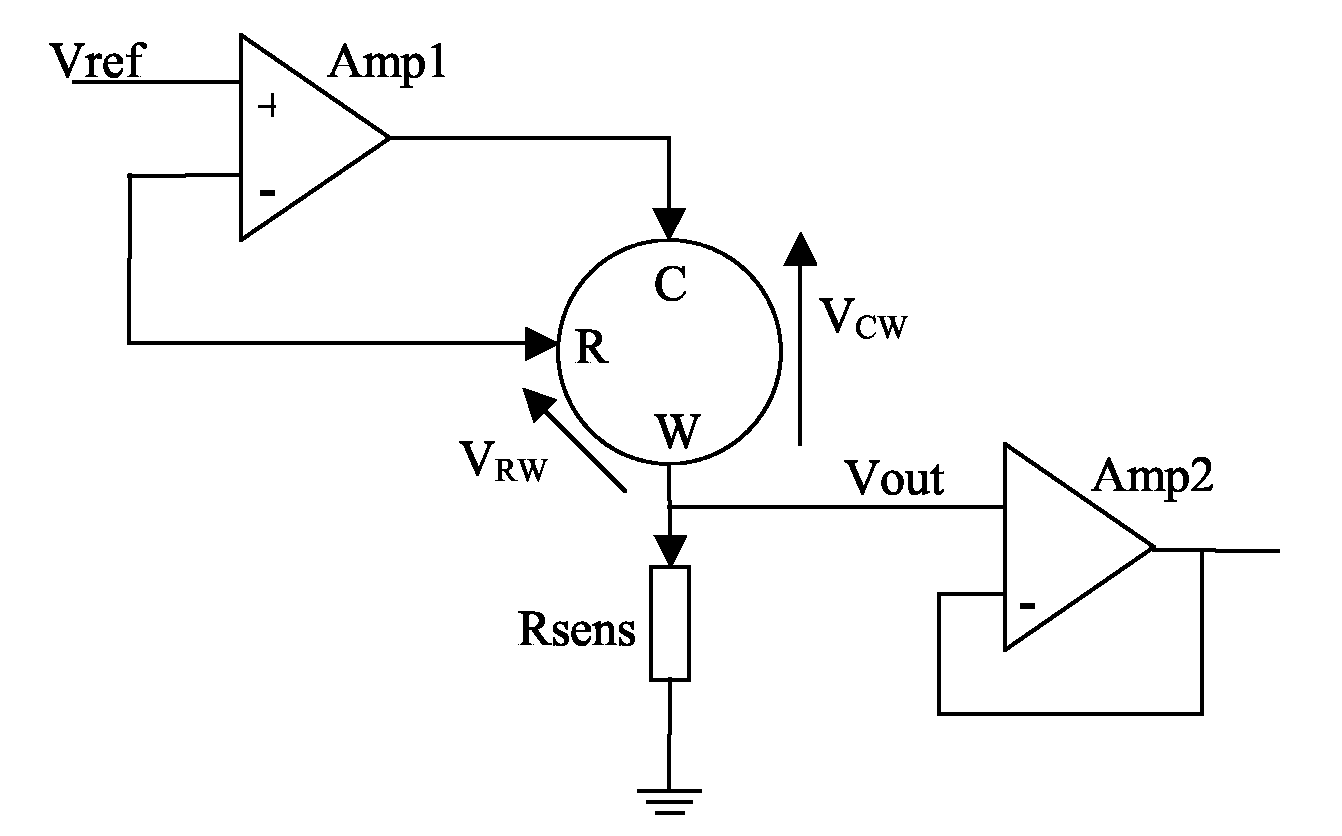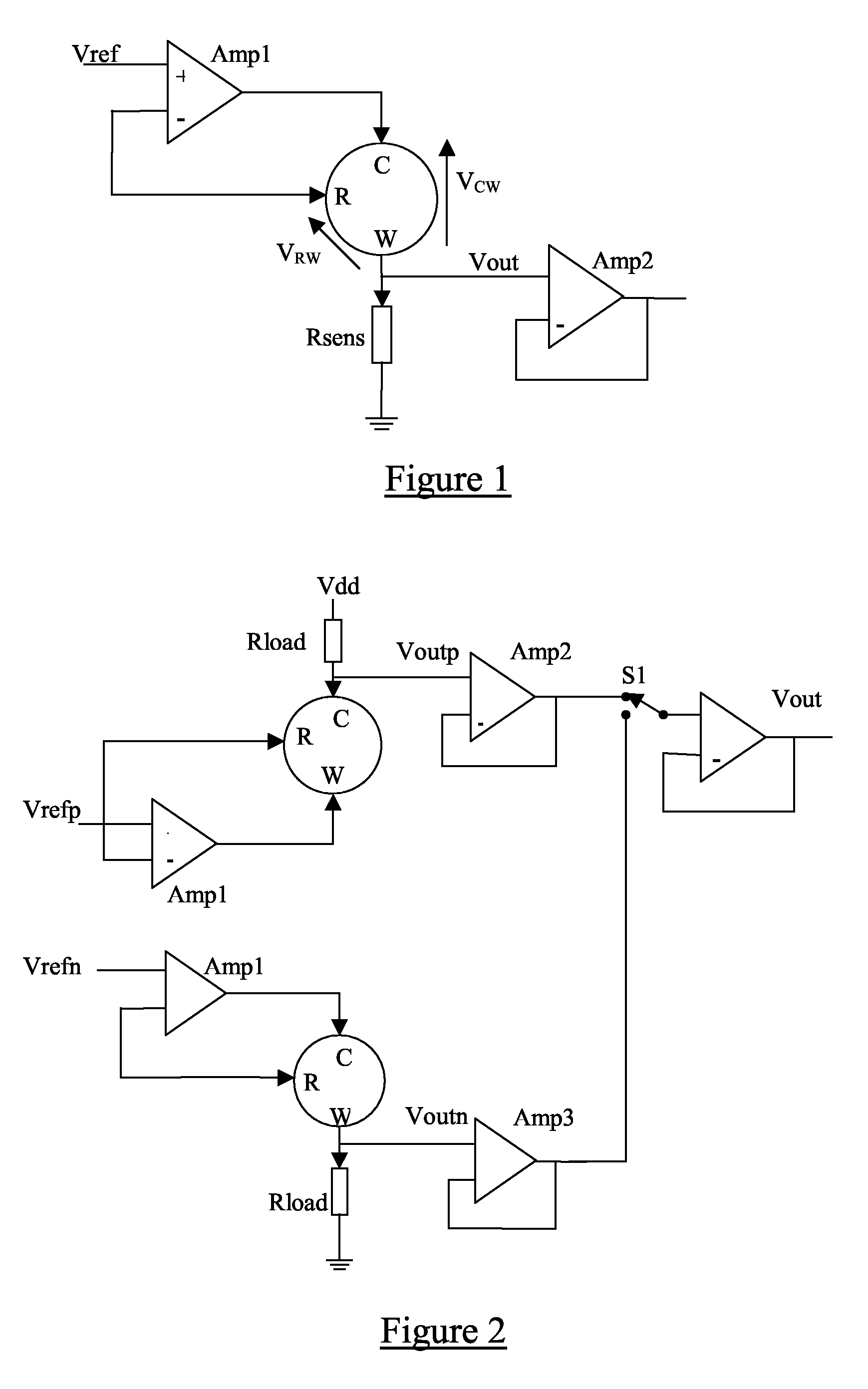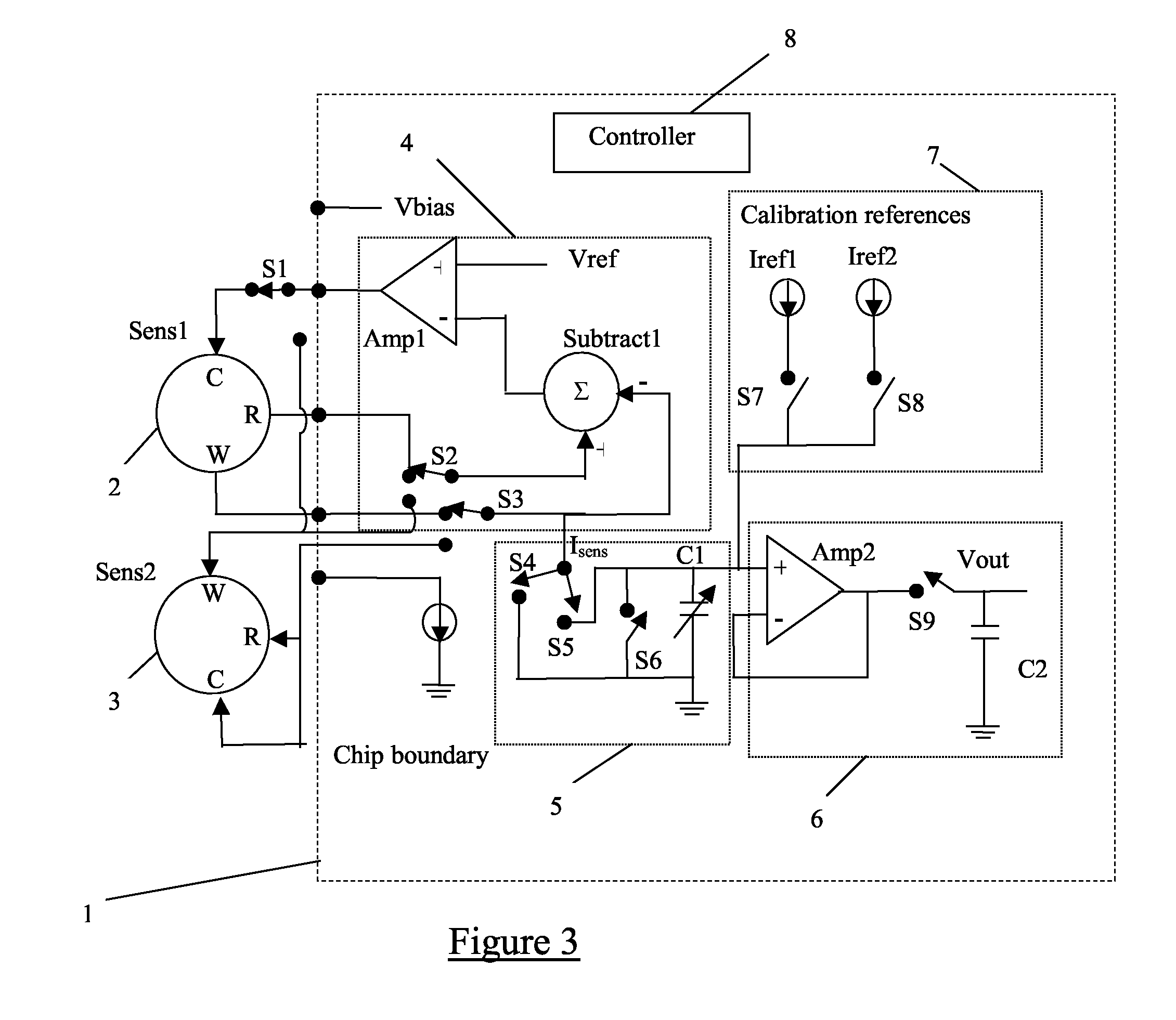Sensor circuits
a technology of sensor circuits and circuits, applied in the field of sensor circuits, can solve the problems of inability to meet the needs of low-voltage integrated circuit design, inability to meet the needs of low-voltage low-voltage devices, and inability to meet the needs of low-voltage devices
- Summary
- Abstract
- Description
- Claims
- Application Information
AI Technical Summary
Benefits of technology
Problems solved by technology
Method used
Image
Examples
Embodiment Construction
[0043]The amperometric sensor biasing and output circuit to be described replaces the external current sensing resistor of prior art designs (Rsens of FIGS. 1 and 2) with an on-chip variable capacitor. Such a circuit is illustrated in FIG. 3. It is assumed that the circuit has available to it a supply voltage of only one volt or less.
[0044]The circuit is assumed to be integrated into a silicon substrate 1 with two external sensors, Sens1 (reference 2) and Sens2 (reference 3), suitably connected to it; for example sensor Sens1 could be a glucose sensor with an optimal work potential of 0.6V, and sensor Sens2 could be an oxygen sensor with an optimal work potential of −0.6V. However, the sensors 2,3 do not necessarily need to be off-chip and could alternatively be integrated on-chip. Each sensor has a work electrode W, a reference electrode R and a counter electrode C.
[0045]A work potential setting circuit 4 comprises a work potential setting amplifier Amp1 and a subtractor Subtract1....
PUM
| Property | Measurement | Unit |
|---|---|---|
| supply voltage | aaaaa | aaaaa |
| voltage | aaaaa | aaaaa |
| circuit voltage | aaaaa | aaaaa |
Abstract
Description
Claims
Application Information
 Login to View More
Login to View More - R&D
- Intellectual Property
- Life Sciences
- Materials
- Tech Scout
- Unparalleled Data Quality
- Higher Quality Content
- 60% Fewer Hallucinations
Browse by: Latest US Patents, China's latest patents, Technical Efficacy Thesaurus, Application Domain, Technology Topic, Popular Technical Reports.
© 2025 PatSnap. All rights reserved.Legal|Privacy policy|Modern Slavery Act Transparency Statement|Sitemap|About US| Contact US: help@patsnap.com



